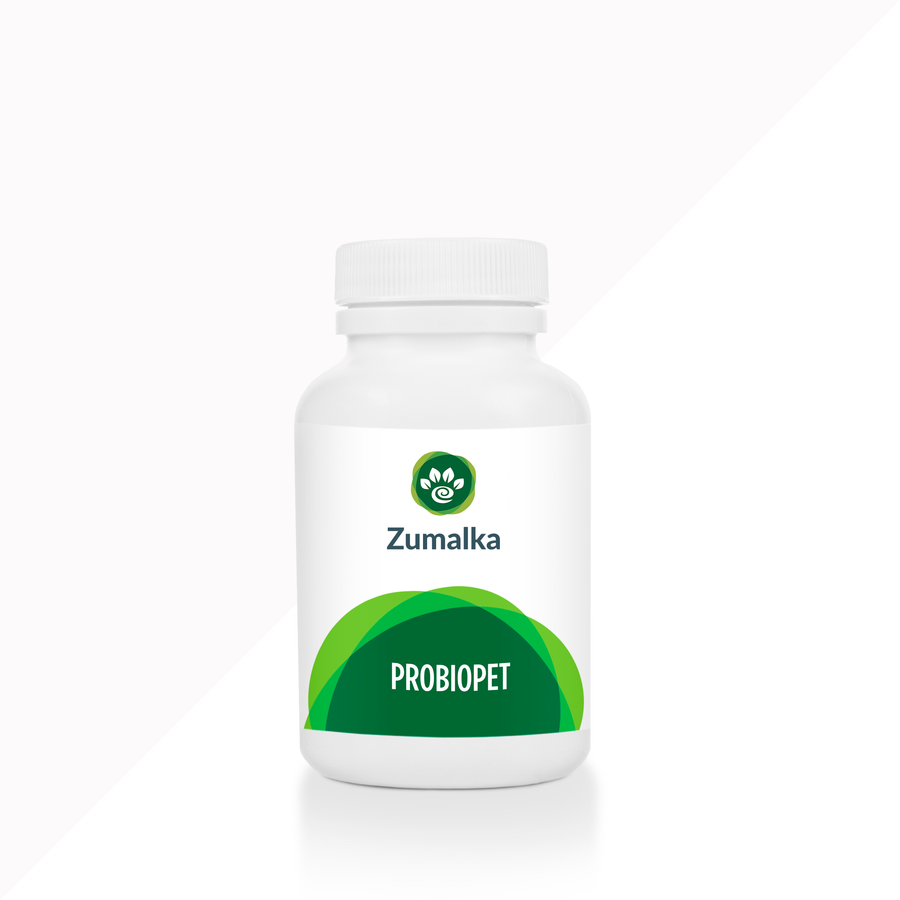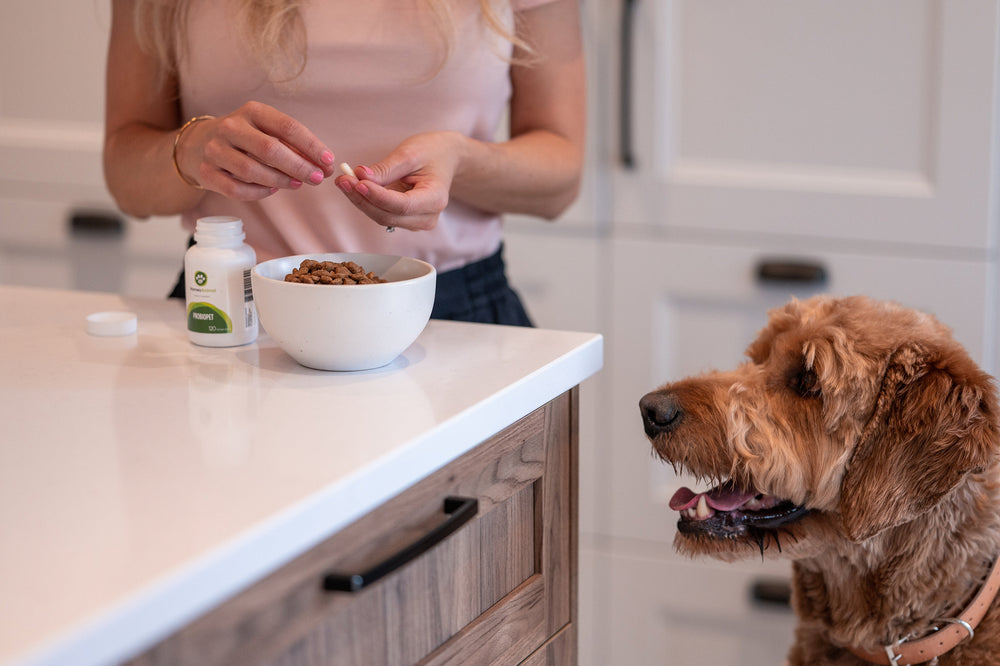Veterinarian-Recommended Strategies for Safe Pet Weight Loss
List of Contents
- Healthy Pet Weight: Why It Matters and What’s at Stake
- Why a Vet Visit is Essential for Safe Pet Weight Loss
- Feeding Your Dog Right: What and How Much to Feed Daily
- Pet Fitness: Easy Ways to Add Movement to Their Day
- Overcoming Common Feeding and Weight Loss Hurdles
- Emphasizing the Importance of Professional Guidance
- Stay on Track: How Weigh-Ins and Follow-Ups Drive Pet Weight Loss Success
- Lifelong Weight Management for a Healthier Pet
- A Final Word
- FAQs
Pet obesity has become a serious health epidemic, impacting up to 59% of dogs in the U.S. and 44% of pets across North America. More than just excess weight, it significantly increases the risk of chronic diseases and shortens your pet’s lifespan.
Excess weight can significantly reduce your pet’s quality of life, leading to mobility issues, illness, and decreased energy. This article presents a straightforward, effective approach to help pets lose weight safely and lead healthier, happier lives.
Healthy Pet Weight: Why It Matters and What’s at Stake

Obesity in dogs and cats is far more than a cosmetic concern. It’s a serious health issue that can significantly reduce quality of life and even become life-threatening. From joint problems to heart disease, excess weight puts your pet at risk for numerous preventable conditions. These include:
- Type 2 diabetes: Obese cats are up to 3 times more likely to develop diabetes.
- Heart disease: Excess weight strains the heart and circulatory system.
- Osteoarthritis and joint injuries: Extra weight accelerates joint wear and tear, leading to pain and reduced mobility.
- High blood pressure: Can contribute to organ damage and cardiovascular issues.
- Certain cancers: Especially intra-abdominal cancers linked to obesity.
- Increased surgical and anesthetic risk: Higher risk of complications during procedures.
Cat-specific risks:
- Hepatic lipidosis (fatty liver disease)
- Feline lower urinary tract diseases
Dog-specific risks:
- Cruciate ligament tears
- Back pain and spinal issues, particularly in small breeds
Helping your pet lose excess weight goes far beyond appearance. It’s a powerful step toward better health, mobility, and longevity. Below are some of the most important benefits of maintaining a healthy weight in dogs and cats:
- Improved quality of life: More energy, mobility, and comfort in daily activities.
- Reduced stress on joints: Less strain means improved movement and a lower risk of arthritis.
- Easier vet exams and surgeries: A healthy weight enables safer and more accurate procedures.
- Better cardiovascular health: Weight loss supports heart function and circulation.
- Enhanced physical performance: Leaner pets are more agile, active, and playful.
- Reduced need for medications: Weight loss can lessen or eliminate the need for some chronic medications.
- Increased lifespan: Studies show leaner pets may live up to 1.8 years longer than overweight pets.
Why a Vet Visit is Essential for Safe Pet Weight Loss
Always consult your veterinarian before starting a weight loss plan for your pet, as underlying medical conditions like hypothyroidism or Cushing’s disease may be contributing to weight gain. A proper veterinary evaluation ensures a safe, effective, and personalized approach to your pet’s health.
Body Condition Score (BCS)
During a check-up, your veterinarian will assess your pet’s Body Condition Score (BCS), a 1 to 9 scale where 5/9 is considered ideal, to evaluate excess weight. You can also learn to assess BCS at home by feeling for your pet’s ribs and checking for a visible waist and abdominal tuck.
An ideal body condition means your pet’s ribs are easily felt with a light fat covering, and there’s a visible waist and abdominal tuck when viewed from the side and above.
Overweight pets have ribs that are harder to feel due to moderate fat and a poorly defined waist. In obese pets, ribs are difficult to detect under thick fat, the waist is absent, and fat deposits or abdominal distention may be visible.
Setting pet weight loss goals with your veterinarian
Your veterinarian will help set a healthy target weight for your pet and establish a realistic time frame, typically 3 to 6 months, to achieve it safely. A general guideline is a monthly weight loss of 3–5% for dogs and 1–2% per week for cats, with slower progress for severely overweight cats.
Dogs should aim to lose 1–2% of their body weight per week, with a slower rate, around 0.5%, recommended for morbidly obese dogs. For example, a 20-pound dog should lose approximately 2 pounds per month for safe, sustainable progress.
Calorie calculations for safe pet weight loss
Your veterinarian will calculate your pet’s daily calorie needs based on their ideal or target weight, not their current weight. For dogs, standard formulas can help estimate calorie requirements, but vet guidance ensures accuracy and safety.
For otherwise healthy dogs, feeding based on their Resting Energy Requirement (RER for their target weight is often sufficient for safe weight loss. This approach supports gradual, sustainable progress without compromising overall health.
Keeping a food diary for your pet
Keeping a food diary for your pet is a simple but effective way to track their daily intake. Recording everything your pet eats, including treats and table scraps, over a few days helps your veterinarian assess their current diet and make informed recommendations.
Feeding Your Dog Right: What and How Much to Feed Daily

Veterinary therapeutic weight-loss diets are specially formulated to support safe and effective calorie restriction. Unlike over-the-counter pet foods with general "weight control" claims, these diets are backed by clinical research and precise nutrient profiles.
Choosing a veterinarian-recommended weight-loss formula can make a significant difference in your pet’s long-term health and weight management success. For additional support, consulting a certified pet nutritionist can provide tailored guidance based on your pet’s specific needs.
Below are the key features that set veterinary therapeutic weight-loss diets apart from standard over-the-counter options:
- Veterinary weight-loss diets are formulated with lower energy density, higher protein to preserve lean muscle, and increased fiber to promote satiety. They also contain reduced fat and a higher concentration of essential vitamins and minerals to prevent nutrient deficiencies during calorie restriction.
- Your veterinarian can recommend a weight-loss diet tailored to your pet’s individual needs and health status. In some cases, a pet nutritionist may offer additional guidance, and certain therapeutic diets may even help boost your pet’s metabolism for more effective weight management.
- Canned food may be especially beneficial for cats, as it typically contains higher protein and moisture levels that support their unique dietary needs. Dogs, on the other hand, can thrive on either wet or dry formulations, depending on their preferences and nutritional requirements.
The importance of precise portion control in pet diets
Always measure your pet’s food (never estimate!) using a standard measuring cup or, preferably, a kitchen gram scale for maximum accuracy. Even small overages can accumulate over time, making precise portioning essential for successful weight management and long-term health.
Safely switching pet food and controlling treat calories
To avoid gastrointestinal upset, transition your pet to a new food gradually over 1 to 3 weeks by mixing it with their current diet. Treats should be limited (preferably reserved for special occasions) and should account for no more than 10% of your pet’s total daily calories to support healthy weight and balanced nutrition.
Instead of relying on food treats, reinforce good behavior with attention, petting, or play to strengthen your bond without adding extra calories. For dogs, consider offering low-calorie vegetable snacks, such as baby carrots, green beans, cucumber slices, zucchini slices, broccoli florets, or cooked squash, as healthy alternatives.
Knowing what NOT to feed your pet is crucial
Always avoid feeding your pet toxic foods such as onions, garlic, grapes, raisins, and avocados, which can cause serious health issues. For safer treat-giving, break larger treats into smaller pieces. Dogs don’t count portions, but they’ll still enjoy the reward just as much.
Avoid feeding table scraps, as many human foods are high in calories and fat, and some can be toxic to pets. To support their health and safety, stick to nutritionally balanced diets specifically formulated for animals.
Best practices for pet feeding schedules and methods
Feeding specific meals rather than leaving food out all day helps prevent overeating and weight gain. Offering two or more small meals daily can also reduce hunger-related behaviors like begging and support better portion control.
Automatic feeders can help regulate meal timing and portions while redirecting begging behavior away from you. Using food puzzles, snuffle mats, or dispensing toys encourages pets to “work” for their food, which slows eating and provides valuable mental stimulation.
Increasing your pet’s activity can be as simple as moving food bowls to different locations, such as upstairs or downstairs, to encourage movement. For cats, tossing kibble across the room turns mealtime into a playful chase, promoting both exercise and mental stimulation.
Pet Fitness: Easy Ways to Add Movement to Their Day
Before increasing your pet’s activity, particularly if they’re overweight or have existing health issues, consult your veterinarian to develop a safe exercise plan. Start with brief, low-impact sessions and gradually increase the intensity and duration to safely build stamina and prevent injury.
While exercise supports overall health, diet plays the primary role in pet weight loss, especially in the early stages. Research shows that for dogs, food restriction accounts for 60–70% of weight loss success (and exercise 30–40%), while for cats, diet alone drives up to 90% of the results.
A daily brisk 30-minute walk is ideal for most dogs to support weight loss and overall health. For obese dogs, begin with shorter sessions, such as two 15-minute walks per day, and gradually increase duration while watching for signs of fatigue.
As your dog’s fitness improves, increase exercise intensity by progressing from slow walks to more vigorous activities like fetch, hill runs, or swimming. Incorporating "fast-and-slow" interval games can boost calorie burn while keeping workouts fun and mentally stimulating.
Exercise ideas for dogs:
- Interactive toys like balls or sticks, as well as activities like agility training, treadmill workouts, and core-strengthening exercises, can help keep your dog busy and cognitively engaged.
- For dogs with mobility challenges or special needs, veterinary rehabilitation, like underwater treadmill sessions and range-of-motion exercises, offers safe and effective support.
Exercise ideas for cats:
- Cats benefit from at least 10–15 minutes of active play twice a day, especially during their naturally energetic morning and evening hours. Engage them with interactive toys like laser pointers, feather wands, or crinkly paper balls to encourage movement and mental stimulation.
- Providing variety and environmental enrichment is essential for keeping indoor cats active and mentally stimulated. Use cat trees for climbing, encourage movement up and down stairs, and offer toys that move unpredictably or make noise to spark their natural curiosity and drive to play.
Overcoming Common Feeding and Weight Loss Hurdles
Begging is a common behavior issue that’s often unintentionally reinforced by offering food in response. To manage it, use automatic feeders to create consistent mealtimes and respond to attention-seeking with non-food rewards like petting, brushing, or play.
If your pet seems hungry outside of mealtimes, offer fresh water instead of food and consider low-calorie treats that allow for greater volume without excess calories. During your meals, placing dogs in a crate or separate room can help prevent begging and reinforce healthy boundaries.
What should I do if I have more than one pet?
In multi-pet households, it's important to prevent food sharing or stealing, as it can lead to untracked calorie intake and disrupt individual feeding plans. To manage this, feed pets in separate rooms and consider elevated feeding areas for smaller pets to keep food out of reach from larger or overweight animals.
To prevent food stealing in multi-pet homes, use tools like safety chains on doors or feeding boxes with small openings that only slimmer pets can access. For added control, consider microchip-activated feeders and avoid leaving food out unattended to maintain accurate portioning.
Weight loss plateaus are common in dogs after about six months and often require adjustments beyond calorie reduction. If further restriction risks nutritional imbalance, consider changing the food formulation, such as increasing protein or fiber, switching to wet food, and adding short bursts of anaerobic exercise to help restart progress.
Emphasizing the Importance of Professional Guidance
Take charge of your pet’s health with Zumalka’s Custom Homeopathic Remedy Consultation for Dogs, Cats & Pets. This one-on-one session with a certified homeopath focuses on identifying and addressing the root cause of your pet’s condition, not just the symptoms. It’s especially effective for pets with chronic, complex, or behavioral issues.
Stay on Track: How Weigh-Ins and Follow-Ups Drive Pet Weight Loss Success

Regular weigh-ins are essential to track your pet’s progress and ensure the weight loss plan is effective. Aim to weigh your pet at least every other week, and monthly at minimum, until their goal weight is reached.
Schedule a veterinary recheck within one week of starting a new diet and again 1–2 weeks after the full transition to monitor your pet’s response. Even if you’re weighing at home, monthly veterinary visits are recommended to assess progress and adjust the plan as needed.
For medium to large cats and dogs, you can monitor weight at home by weighing yourself first, then holding your pet and subtracting your weight. Use a reliable, accurate scale to ensure consistent and meaningful results.
While tracking weight is important, true success also means improving your pet’s quality of life, mobility, and overall well-being. Focus on functional gains and reduced health risks, because healthy, not skinny, is the real goal.
Lifelong Weight Management for a Healthier Pet
Consistency in mealtimes and exercise routines is essential for maintaining your pet’s healthy weight. A predictable schedule not only supports long-term success but also provides a sense of security and structure for your pet.
To maintain a healthy weight long-term, your pet may need to continue on a diet-specific food or adjusted portion sizes. Because obesity increases the risk of future weight gain, ongoing dietary management is often necessary even after reaching the goal weight.
Additionally, to promote your pet’s long-term health, develop a customized maintenance plan in partnership with your veterinarian or a certified pet nutritionist. Prevent weight regain by maintaining a consistent exercise routine and carefully monitoring total calorie intake, including treats.
A Final Word
With guidance from your veterinarian or a pet nutritionist, along with precise portion control, mindful treat management, and tailored exercise, you can help your pet achieve and maintain a healthy weight. Long-term improvements in mobility, overall health, and quality of life are possible through perseverance, consistency, and ongoing monitoring.
Successful pet weight loss takes patience, flexibility, creativity, and a strong partnership with your veterinary team. The reward is well worth the effort: a healthier, happier pet with improved quality of life and increased longevity.
FAQs
How can I get my cat to lose weight safely?
To help your cat lose weight safely, consult your veterinarian or pet nutritionist, feed measured portions of a vet-recommended diet, limit treats, encourage daily play, and monitor progress with regular weigh-ins to ensure healthy, gradual results.
How can I help my dog lose weight?
To help your dog lose weight, partner with your veterinarian or pet nutritionist to create a personalized plan that includes measured meals, a nutritious diet, fewer treats, consistent daily exercise, and regular weigh-ins to ensure safe, gradual progress.
How do I help my dog lose weight after being neutered?
Consult your veterinarian or pet nutritionist to modify your dog's calorie consumption, transition to a weight-management food, reduce rewards, boost daily exercise, and track your progress with frequent weigh-ins in order to help them lose weight after neutering.
What is the best food for a cat to lose weight?
The best food for a cat to lose weight is a veterinary-recommended, high-protein, low-calorie diet that promotes fat loss while preserving muscle. Wet food may also help increase satiety and support healthy weight management.
What can I give my skinny cat to gain weight?
To help a skinny cat gain weight, offer a high-calorie, nutrient-dense diet recommended by your veterinarian or pet nutritionist. Choose foods rich in protein and fat, feed multiple small meals daily, and rule out underlying health issues.
How many times a day should I feed a cat?
Two to three measured meals a day are recommended for the majority of adult cats to promote regularity, weight control, and healthy digestion. Senior cats and kittens may need more frequent feeding schedules that are supervised by a veterinarian or pet nutritionist.
Is dry or wet food better for cat weight loss?
For cat weight loss, wet food is often better due to its higher protein, lower calorie density, and increased moisture, which enhances satiety. However, the best choice depends on your cat’s specific needs and veterinary guidance.
How to tell if a cat is overweight?
Check for excess belly fat, trouble feeling the ribs, and a lack of a noticeable waist to determine if a cat is overweight. Accurate weight assessment and monitoring of your cat is made possible by routine veterinary examinations and body condition rating.
Is 2 cans of wet food a day enough for a cat?
Whether two cans of wet food per day is enough for your cat depends on its calorie needs, weight, age, and activity level. For safe, balanced feeding, consult your veterinarian or pet nutritionist for personalized guidance.
How quickly can cats lose weight?
Cats should lose weight gradually, typically no more than 1–2% of their body weight per week, to avoid health risks like hepatic lipidosis. Safe, steady weight loss requires veterinary or pet nutritionist guidance, portion control, and regular progress monitoring.
What is a safe rate for dogs to lose weight?
A safe rate for dogs to lose weight is about 1–2% of their body weight per week. Gradual weight loss helps preserve muscle, supports metabolism, and reduces health risks. Always consult your veterinarian. Added guidance from a pet homeopathy specialist is also beneficial.
How many times a day should a dog eat?
The majority of adult dogs should eat two measured meals a day for ideal digestion and weight control. For puppies, older dogs, and dogs with health issues, more frequent feedings could be required. Consult your veterinarian or a trained pet nutritionist for guidance.
Is rice good for dogs?
In moderation, rice can be beneficial for dogs. In bland diets, plain boiled white or brown rice is frequently utilized since it is easy to digest. Before making any dietary adjustments, always get advice from your veterinarian.
What can I make for my dog to lose weight?
Prepare meals at home using lean proteins (like turkey or chicken) and low-calorie veggies (like carrots or green beans) to aid in weight loss. To guarantee appropriate balance and portion control, always seek advice from your veterinarian or pet nutritionist.









Leave a comment